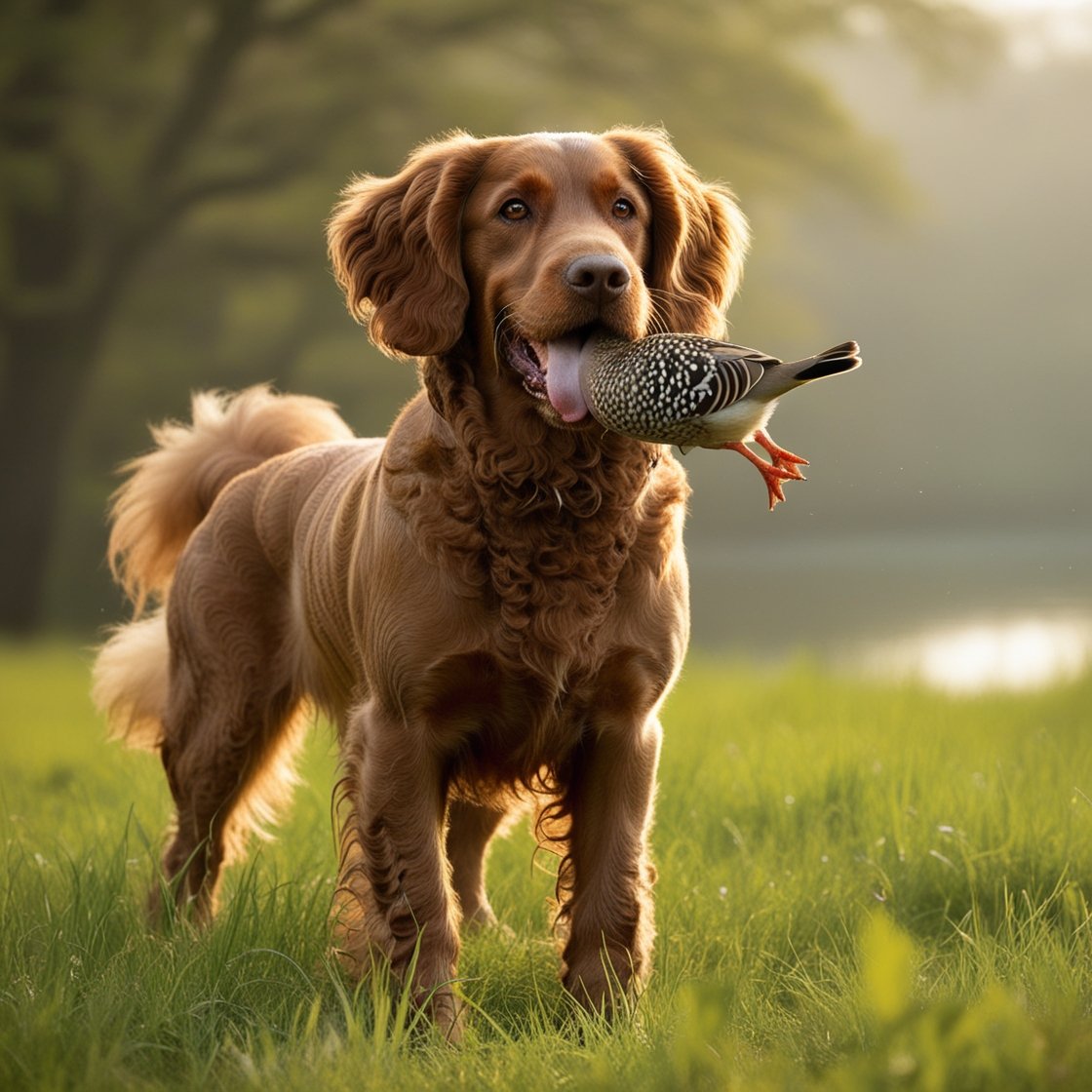“The Unsung Heroes: Brown Hunting Dog Breeds that Excel in the Field”
** Introduction **
When it comes to choosing a hunting companion, many people overlook the unique qualities of the brown hunting dog breeds. These dogs aren’t just chosen for their beautiful, rich coats; He has an incredible blend of intelligence, integrity and a strong work ethic. Whether you are roaming in dense forests or open fields, these dogs are known for their exceptional tracking abilities and unwavering focus.
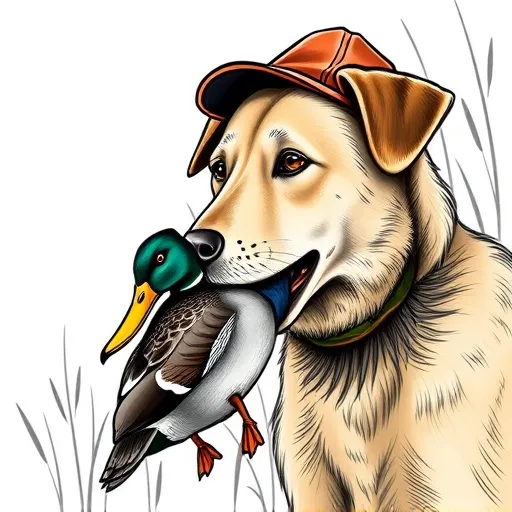
Brown Hunting Dog Breeds
Brown hunting dog breeds like the Labrador Retriever, Chesapeake Bay Retriever, and Vizsla are among the top choices for hunters who value both skill and companionship. Their keen sense of smell, stamina and ability to adapt to different terrains make them indispensable in the field. In addition to their hunting skills, these dogs are also known for being affectionate and family-friendly, making them perfect additions to any household.
In this post, we’ll learn about some of the best brown hunting dog breeds and what makes them stand out in the hunting world. If you are considering adding a new canine companion to your hunting adventures, these brown-coated dogs may be the perfect fit.
Popular 10 Brown Hunting Dog Breeds ;
Here are 10 popular brown hunting dog breeds:
Labrador Retriever Overview:
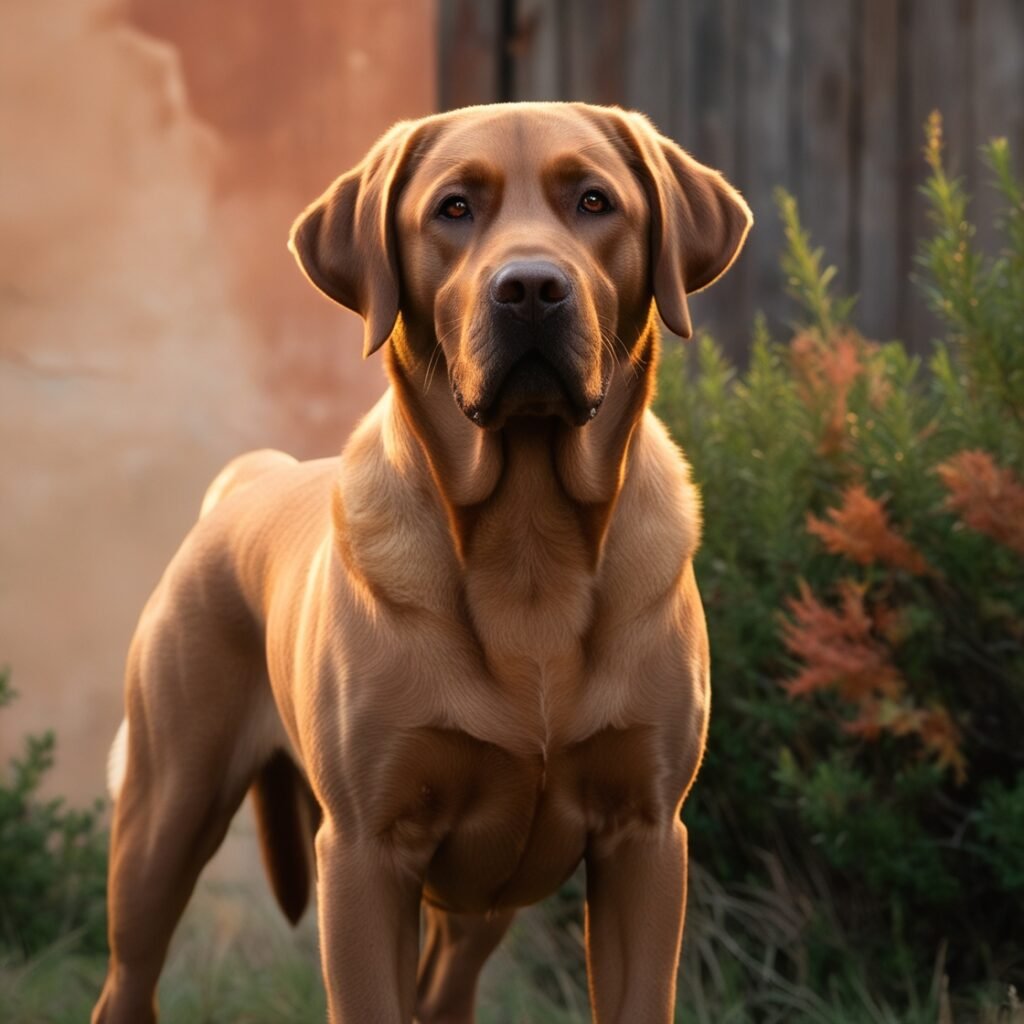
- Height:
- Male: 22.5-24.5 inches
- Female: 21.5-23.5 inches
- Weight:
- Male: 65-80 pounds
- Female: 55-70 pounds
- Color:
- Chocolate (brown), Black, Yellow
- Temperament:
- Friendly, smart, loyal, and eager to please
- Hunting Skills and Abilities:
- Labradors are exceptional retrievers, known for their ability to retrieve game on both land and water. They have a keen sense of smell, excellent stamina and can work in a variety of terrains.
- Origin and History:
- The Labrador Retriever originated in Newfoundland in the 1800s, where they helped fishermen retrieve and haul nets. Later, they were brought to England, where they were refined into the efficient hunting dogs we know today.
Chesapeake Bay Retriever Overview:
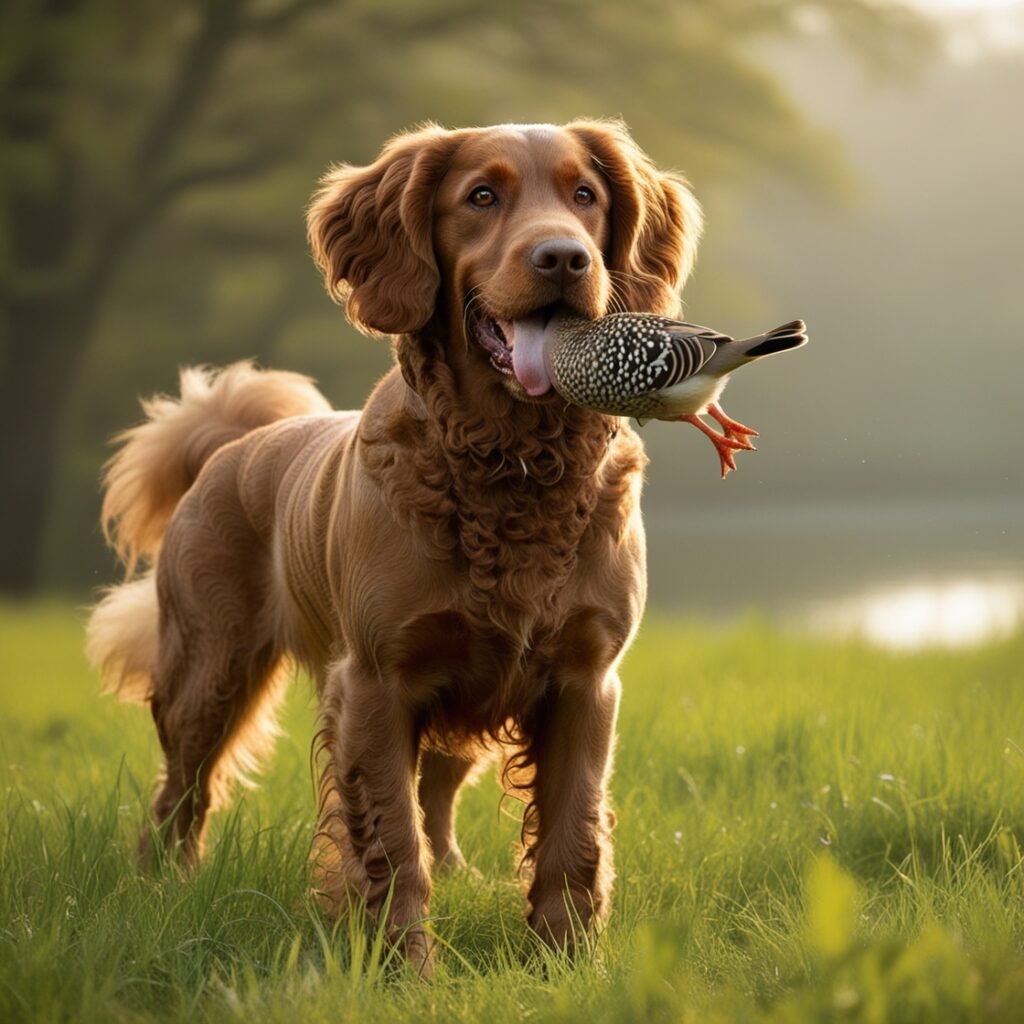
- Height:
- Male: 23-26 inches
- Female: 21-24 inches
- Weight:
- Male: 65-80 pounds
- Female: 55-70 pounds
- Color:
- Brown, Sedge, Deadgrass (ranges from light tan to deep brown)
- Temperament:
- Loyal, protective, intelligent, and determined
- Hunting Skills and Abilities:
- The Chesapeake Bay Retriever is known for its strength, stamina, and ability to retrieve waterfowl in harsh conditions. They have a thick, water-resistant coat that helps them excel in cold water, and they are known for their tenacity and ability to work in challenging environments.
- Origin and History:
- Originating in the Chesapeake Bay area in the early 1800s, this breed was developed from dogs rescued from a shipwreck. They were bred with other retrievers and water dogs to create a breed specifically designed to retrieve waterfowl in the challenging conditions of the Chesapeake Bay.
German Shorthaired Pointer Overview:
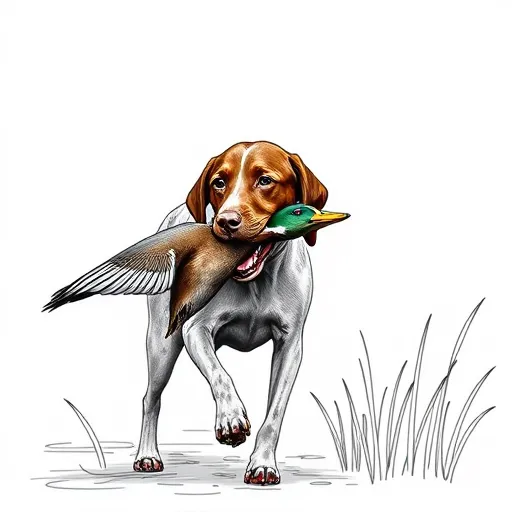
- Height:
- Male: 23-25 inches
- Female: 21-23 inches
- Weight:
- Male: 55-70 pounds
- Female: 45-60 pounds
- Color:
- Liver (brown), Liver and White, Roan, with various patterns of ticking or solid patches
- Temperament:
- Energetic, intelligent, friendly, and versatile
- Hunting Skills and Abilities:
- German Shorthaired Pointers are versatile hunters, excelling in pointing, tracking, and retrieving. They can work on both land and water, making them excellent all-around hunting dogs. Their keen nose and stamina make them particularly effective in various hunting environments.
- Origin and History:
- Originating in Germany in the 19th century, the German Shorthaired Pointer was developed by breeding various pointing and scent hounds to create a versatile hunting dog. The breed was designed to be an all-purpose hunting companion, capable of handling a wide range of game in different terrains.
Vizsla Overview:
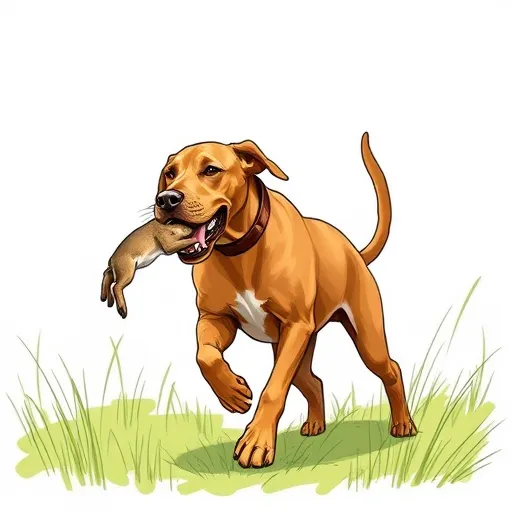
- Height:
- Male: 22-24 inches
- Female: 21-23 inches
- Weight:
- Male: 55-65 pounds
- Female: 44-55 pounds
- Color:
- Golden Rust (a reddish-brown shade)
- Temperament:
- Energetic, affectionate, loyal, and sensitive
- Hunting Skills and Abilities:
- Vizslas are agile and fast, known for their excellent signaling and retrieving skills. They have a strong prey drive and are highly versatile, capable of working both on land and in water. Their keen sense of smell and stamina make them excellent hunting companions.
- Origin and History:
- The Vizsla originated in Hungary over a thousand years ago, bred by the Hungarian elite as a hunting dog. They were prized for their speed, agility, and ability to work together with their owners. The breed was almost driven to extinction after World War II, but was revived and is now appreciated around the world for its hunting abilities and affectionate nature.
Bavarian Mountain Hound Overview:
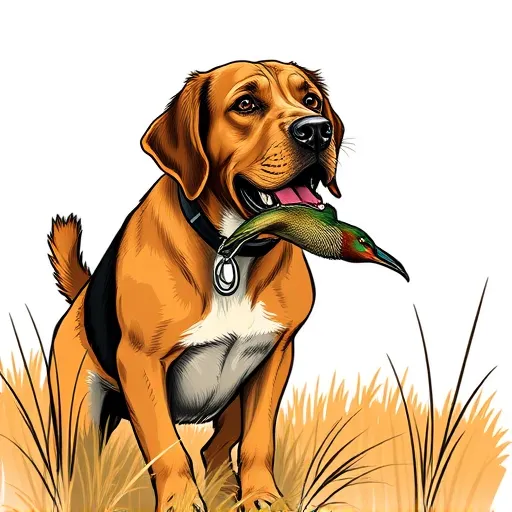
- Height:
- Male: 18.5-20.5 inches
- Female: 17-19 inches
- Weight:
- Male: 44-55 pounds
- Female: 37-48 pounds
- Color:
- Various shades of red, from deep reddish-brown to light fawn, sometimes with black shading on the back and face
- Temperament:
- Calm, loyal, intelligent, and focused
- Hunting Skills and Abilities:
- Bavarian Mountain Hounds are exceptional at tracking down wounded game, thanks to their excellent sense of smell and determination. They are adept at moving on cold roads and are highly valued for their ability to work in difficult terrain. Their strong focus and dedication make them excellent hunting partners.
- Origin and History:
- The Bavarian Mountain Hound was developed in Germany in the 19th century by crossing the Hanoverian Scenthound with smaller, more agile hunting dogs. This breed was specifically created to detect wounded prey in the challenging mountainous regions of Bavaria. They are still highly respected in Europe today for their tracking abilities.
Redbone Coonhound Overview:
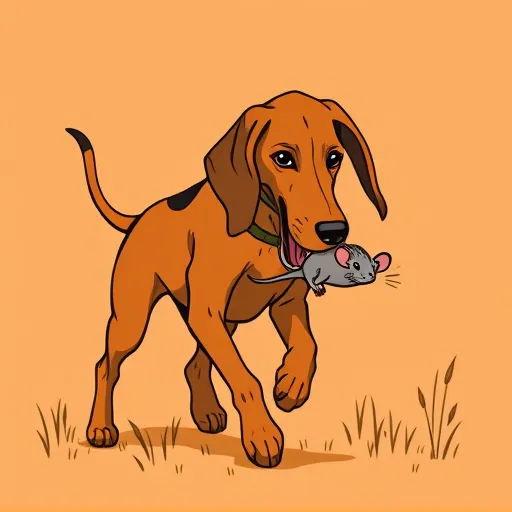
- Height:
- Male: 22-27 inches
- Female: 21-26 inches
- Weight:
- Male: 55-70 pounds
- Female: 45-60 pounds
- Color:
- Solid Red, with a deep, rich hue
- Temperament:
- Friendly, energetic, loyal, and determined
- Hunting Skills and Abilities:
- Redbone Coonhounds are excellent at tracking and treeing game, especially raccoons. They have a keen sense of smell and a strong prey drive, making them effective in a variety of hunting scenarios. Their stamina and ability to work in a variety of terrain is highly valued by hunters.
- Origin and History:
- The Redbone Coonhound originated in the United States, tracing its roots back to early American hunting dogs brought from Europe. Developed in the 19th century, they were bred for coon hunting and are known for their impressive tracking and hunting skills. Their name reflects their distinctive red color and their expertise in hunting raccoons.
Boykin Spaniel Overview:
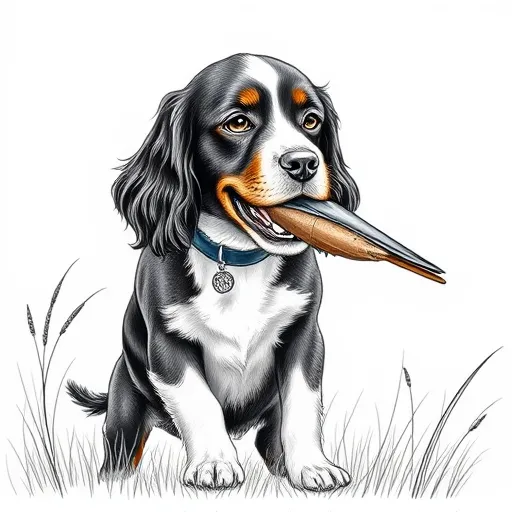
- Height:
- Male: 15.5-18.5 inches
- Female: 14-17 inches
- Weight:
- Male: 30-40 pounds
- Female: 25-35 pounds
- Color:
- Brown (chocolate), with possible variations like liver or tan
- Temperament:
- Friendly, energetic, affectionate, and eager to please
- Hunting Skills and Abilities:
- Boykin Spaniels are great at flushing and retrieving game, especially waterfowl and upland birds. They are known for their strong work ethic, agility, and ability to work well in water and dense cover.
- Origin and History:
- The Boykin Spaniel originated in South Carolina in the early 1900s. It was developed from various spaniels to be a versatile hunting dog suitable for hunting both upland and waterfowl. The breed was named for a local hunter, Whit Boykin, who helped establish its distinctive traits.
Bracco Italiano Overview:
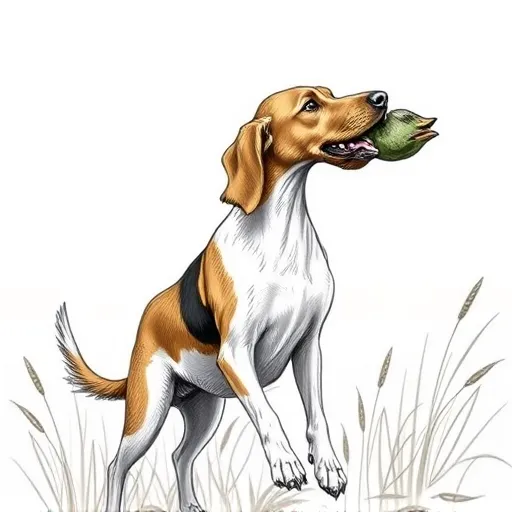
- Height:
- Male: 23-27 inches
- Female: 21-25 inches
- Weight:
- Male: 55-88 pounds
- Female: 44-66 pounds
- Color:
- White with orange, white with chestnut, or roan
- Temperament:
- Gentle, loyal, intelligent, and eager to please
- Hunting Skills and Abilities:
- Bracco Italianos are skilled pointers and retrievers, known for their excellent scenting abilities and versatility in the field. They are particularly good at hunting upland game and retrieving waterfowl. Their keen sense of smell and calm demeanor make them effective and reliable hunting companions.
- Origin and History:
- The Bracco Italiano is one of the oldest hunting breeds in Italy, with roots dating back to ancient times. Over the centuries it was refined as a versatile hunting dog, used for pinpointing and retrieving game. The breed was officially recognized in Italy in the late 1800s and remains a prized hunting dog in Europe.
Weimaraner Overview:
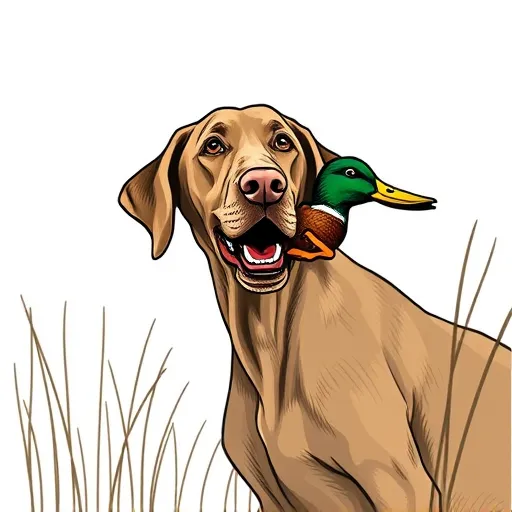
- Height:
- Male: 25-27 inches
- Female: 23-25 inches
- Weight:
- Male: 70-90 pounds
- Female: 55-75 pounds
- Color:
- Silver-gray, sometimes described as grayish-blue
- Temperament:
- Energetic, friendly, intelligent, and loyal
- Hunting Skills and Abilities:
- Weimaraners are known for their versatility in hunting, excelling as pointers and retrievers. They have a keen sense of smell and high stamina, making them effective at tracking and retrieving game both on land and in water.
- Origin and History:
- The Weimaraner originated in Germany in the early 19th century. Bred by German nobles to hunt larger game such as deer and boar, the breed was known for its speed, stamina, and tracking skills. Over time, it became popular as a versatile hunting companion and family pet.
English Springer Spaniel Overview:
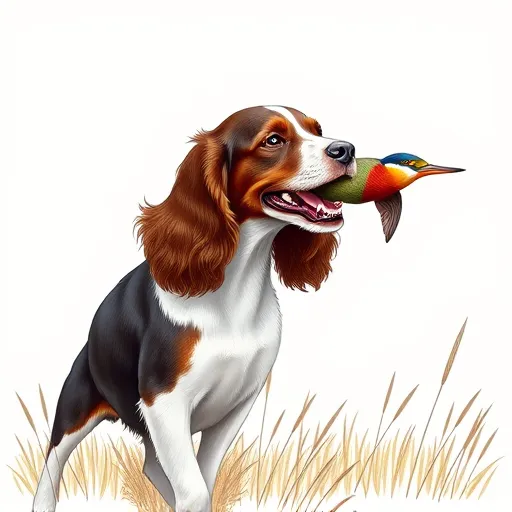
- Height:
- Male: 20-21 inches
- Female: 19-20 inches
- Weight:
- Male: 50-55 pounds
- Female: 40-50 pounds
- Color:
- Various combinations of liver and white, black and white, or roan patterns
- Temperament:
- Friendly, energetic, affectionate, and intelligent
- Hunting Skills and Abilities:
- English Springer Spaniels excel at hunting out and retrieving game from dense cover. They are known for their agility and enthusiasm, making them effective in hunting birds in upland areas and in versatile field work.
- Origin and History:
- The English Springer Spaniel originated in England in the 19th century. It was developed as a hunting dog to rescue game birds from hiding and retrieve them. The breed’s name comes from its ability to “spring” game from concealment, making it a valuable companion in hunting.
Each of these brown hunting dog breeds brings its own unique set of skills and characteristics to the hunting experience.
Common Traits of Brown Hunting Dogs ;
Brown hunting dogs have several unique qualities that make them excellent companions in the field. These brown hunting dog breeds often have a distinctive, rich coat color that ranges from deep chocolate to lighter shades of brown. Depending on the breed their coats can be short and smooth or slightly longer.
A common characteristic is their keen sense of smell, which is essential for tracking game. Gray hunting dogs are known for their stamina and endurance, allowing them to work for long periods of time in challenging conditions. They are also very intelligent and responsive, making training relatively simple.

In terms of temperament, these dogs are generally friendly and loyal, forming strong bonds with their handlers. They are energetic and require regular exercise, which makes them great for active hunters. Additionally, many gray hound breeds are versatile, able to handle a variety of game and adapt to different hunting environments.
Overall, their combination of physical stamina, strong sense of smell and loyal temperament makes gray hunting dogs invaluable in the field and cherished as family pets.
Training and Care for Brown Hunting Dogs ;
The training and care of gray hunting dogs involves some unique considerations to ensure that they perform well in the field and remain happy and healthy. These greyhound dog breeds, known for their strong hunting instincts, benefit from consistent, positive reinforcement training. Start with basic commands and gradually introduce hunting-specific skills like tracking and retrieval. Early socialization is important to develop their versatility and adaptability to different environments.
In terms of care, regular exercise is essential to keep these energetic dogs in peak condition. They thrive on daily physical activity, which also helps manage their high energy levels. Depending on the breed, care needs may vary. Some may have short, easy-to-care coats, while others may require regular brushing to manage hair loss and prevent matting.
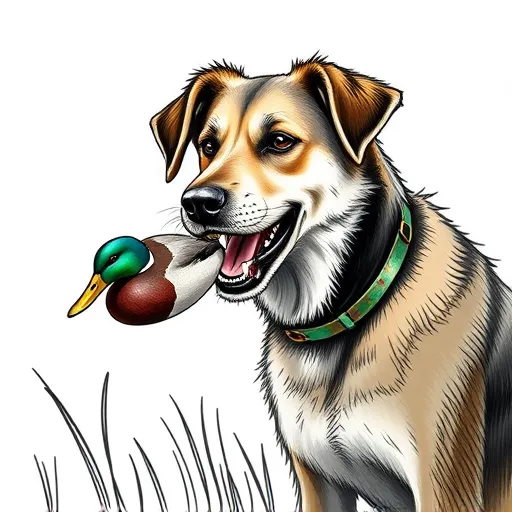
Additionally, it is important to provide a balanced diet suited to their activity level. Regular veterinarian checkups will help keep an eye on their overall health and address any breed-specific problems. With proper training and care, Brown Hound breed dogs will excel at hunting and make loyal, affectionate companions.
Choosing the Right Brown Hunting Dog for You ;
Choosing the right gray hunting dog for you involves several important factors to ensure a good match for both your hunting needs and lifestyle. When considering a Brown Hound dog breed, start by evaluating the type of game you hunt and the environment you will live in. For example, if you need a versatile dog that excels at both upland and waterfowl hunting, a Labrador Retriever or Chesapeake Bay Retriever may be ideal.
Next, consider the dog’s energy level and exercise needs. Some gray hunting dogs, such as the German Shorthaired Pointer, are very energetic and require a lot of exercise, while others may be more suited to a moderate activity level. Think about your own activity level and how much time you can devote to training and exercise.
Additionally, grooming needs also factor in. Some greyhound dog breeds have short, low-maintenance coats, while others may require regular brushing. Finally, think about temperament. Make sure the breed’s personality fits well with your lifestyle and hunting style. By matching these traits with your hunting preferences and daily routine, you will find the perfect gray hunting dog to be both an effective hunting partner and a loyal companion.
** Conclusion **
Ultimately, the Brown Hound dog breed offers a range of exceptional qualities that make them excellent choices for both hunting and companionship. Their keen instincts, stamina and versatility ensure they excel in the field, whether you’re tracking game through dense cover or retrieving it from the water. Each breed, from the energetic German Shorthaired Pointer to the loyal Labrador Retriever, brings unique strengths that meet different hunting needs and environments.
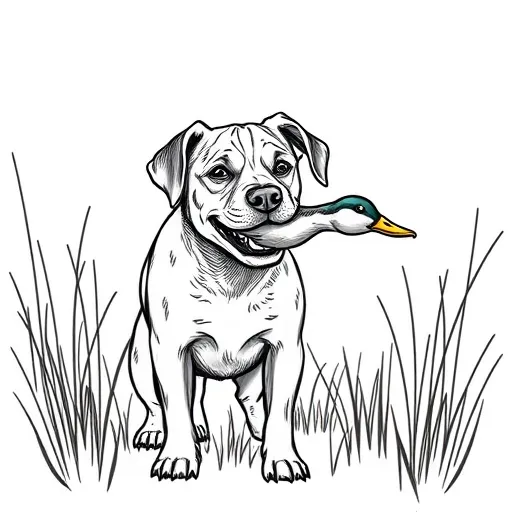
When choosing a brown hunting dog, it is important to consider factors such as energy level, care requirements and temperament to find the dog that best suits your lifestyle. Proper training and care is important to maximize their potential and ensure they remain healthy and happy.
Ultimately, the greyhound dog breeds are not only skilled hunters but also devoted family pets. The combination of their strong work ethic and affectionate nature makes them a valuable addition to any home. By understanding their unique qualities and investing in their training and care, you will be able to enjoy a rewarding partnership with your gray hunting dog for years to come.
You might be interested in reading this post as well Hound Dog Breeds Large
“The Unsung Heroes: Brown Hunting Dog Breeds that Excel in the Field” ** Introduction ** When it comes to choosing a hunting companion, many people overlook the unique qualities of the brown hunting dog breeds. These dogs aren’t just chosen for their beautiful, rich coats; He has an incredible blend of intelligence, integrity and a…
You can read this post https://tomeshnews.co.in/what-are-all-the-giant-dog-breeds/?amp=1
What makes brown hound dog breeds unique in hunting?
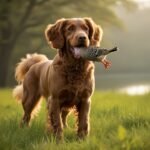
Brown hound dog breeds are distinguished by their excellent sense of smell, stamina, and versatility. Their brown coats often blend well with outdoor environments, and their hunting abilities vary from tracking and retrieving to flushing out game.
How do I choose the right brown hunting dog breed for my needs?

Consider your hunting style, the type of game you pursue, and your lifestyle. For example, if you need a versatile hunter, breeds like the German Shorthaired Pointer might be ideal. If you prefer a breed with a strong waterfowl retrieving ability, the Chesapeake Bay Retriever could be a better fit.
What are the grooming needs for brown hound dog breeds?
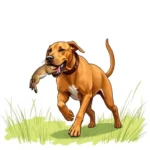
Grooming needs vary by breed. Some, like the short-haired Vizsla, require minimal grooming, while others, like the long-haired Coonhound, may need regular brushing to manage shedding and prevent matting.
How much exercise do brown hunting dogs require?
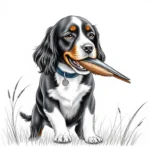
Most brown hound dog breeds are energetic and need regular, vigorous exercise to stay healthy and happy. This can include daily walks, runs, or active play sessions.
Are brown hound dog breeds good with families and children?
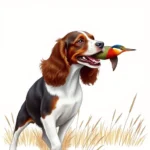
Yes, many brown hound dog breeds, like the Labrador Retriever and Boykin Spaniel, are known for their friendly and loyal nature, making them excellent family pets. They generally get along well with children and other pets when properly socialized.

